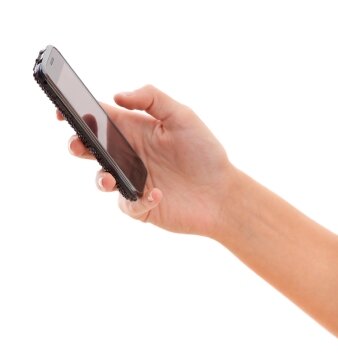December 1, 2011
Mobile Research Can Deliver Insights in a Way No Other Medium Can
By Jacki Spear, Vice President of Business Development
Like many of my colleagues in the market research industry, I am a big advocate for the promise of mobile surveys. I’m fascinated by mobile’s ability to capture the immediate, unfiltered responses of survey participants, and intrigued by the implications of that ability on the research we conduct for our clients.
Recently, my clients at Mindshare and GfK MRI demonstrated how mobile research can deliver insights in a way no other medium can.
In August of this year, Jay A. Mattlin and Michal Galin of GfK MRI and Judy Bahary of Mindshare had an interesting challenge. They needed to find an effective, comprehensive means to measure consumer response to print magazine advertising. They, along with the many believers in the printed medium, contend that printed magazine ads have unique capabilities of persuasion because of the reader’s “lean-forward,” active engagement in the content. Also, they maintain that print magazine ads, by their nature, draw attention serendipitously to categories in which the consumer is not otherwise interested or brands the consumer does not favor, because consumers engaged in reading have made themselves open to new images, messages and experiences.
The method they used to measure the ads’ impact could not interfere with the respondents’ tactile experience with the hard copy ads in the magazines. Therefore, they could not use electronic means to deliver the ads to respondents. On the other hand, in order for the project to be feasible, they needed a way to gather respondents’ feedback quickly and inexpensively, and the best way to do this is through an online panel.
So they devised an experiment of a new print research concept using members of the Lightspeed Research MySurvey Panel equipped with iPhones. They began by fielding an intake survey to MySurvey panel members aged 18+ who had read or looked into a magazine in the prior 30 days, said they definitely or probably would read or look into a magazine in the following seven days, and owned an iPhone 4 or 3GS. The questionnaire, which was delivered to respondents’ PCs via the MySurvey portal, asked about their consumption of and preferences for 10 product categories and brands. At the end of the questionnaire, respondents who agreed to participate further were instructed to download an iPhone app. Using this app, respondents were asked to photograph magazine ads they “particularly noticed” over the course of one week. The “noticed” ads were later linked to panelists’ proclivities toward the advertised products, as measured by the intake survey.
The response was exciting, as it confirmed that this approach was engaging for the respondents and also was successful in achieving all the project’s objectives. Of the 253 intake survey respondents, 67% of them snapped at least one photo. Altogether, these 170 participants took a total of 2,006 pictures, an average of almost 12 per person. The study provided evidence that magazine advertising does open consumers’ eyes to messages and images they didn’t expect from products and brands that they don’t regularly consume, and it indicated that consumers were more apt to be struck by ads for products they use than products they don’t use.
What I found so impressive was that not only did the research meet its objectives, but it also demonstrated how mobile, when used the right way, can provide a seamless and unobtrusive way to capture consumers’ emotional reactions in the moment they experience them.
Category:Case Study, Mobile Surveys
Posted on December 1, 2011
Back to Home >>

Leave a Reply